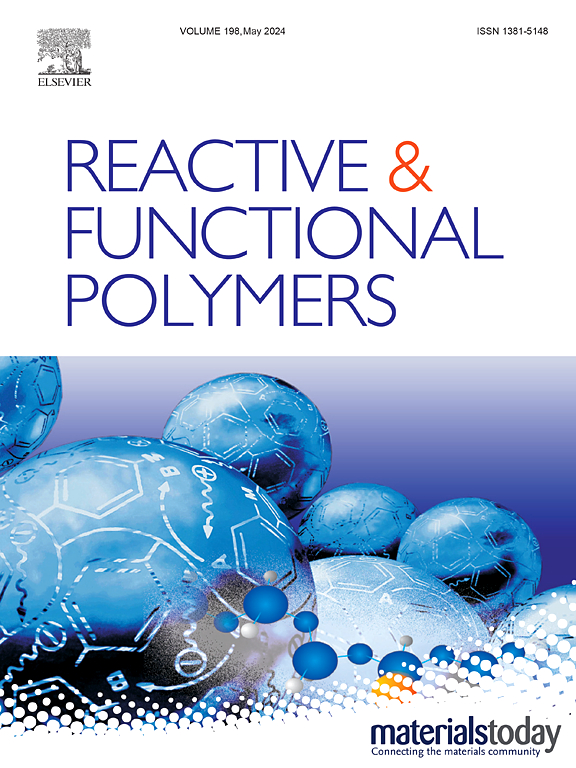Resveratrol/POSS-based polymethacrylates for DLP 3D printing and fluorescent anti-counterfeiting
IF 5.1
3区 工程技术
Q1 CHEMISTRY, APPLIED
引用次数: 0
Abstract
A trifunctional methacrylate monomer (REM) was synthesized from biomass resveratrol to address the need for sustainable resins in digital light processing (DLP) 3D printing. The polymer properties were optimized by incorporating methacryloxypropyl polyhedral oligomeric silsesquioxane (MA-POSS) with different mass fractions. Light-curing biobased materials (REM/POSS) exhibited enhanced thermal stability and dielectric properties. The REM/POSS-30 % composite showed a low dielectric constant (Dk = 2.90 at 14.2 GHz) and excellent thermal stability. Compared to commercial bisphenol A-based resins (MEP), REM/POSS-0 % demonstrated superior comprehensive performance. The stilbene structure of resveratrol in REM/POSS polymers provided strong blue fluorescence under UV light, suggesting potential for information storage and encryption. The successful fabrication of complex structures confirmed the compatibility of REM/POSS with DLP 3D printing, offering a promising alternative to petroleum-based materials in both 3D printing and anti-counterfeiting applications.

基于白藜芦醇/ poss的聚甲基丙烯酸酯用于DLP 3D打印和荧光防伪
以生物质白藜芦醇为原料合成了一种三功能甲基丙烯酸酯单体(REM),以满足数字光处理(DLP) 3D打印中对可持续树脂的需求。通过添加不同质量分数的甲基丙烯酸氧基丙基多面体低聚硅氧烷(MA-POSS)来优化聚合物的性能。光固化生物基材料(REM/POSS)表现出较好的热稳定性和介电性能。REM/ poss - 30%复合材料具有较低的介电常数(在14.2 GHz时Dk = 2.90)和优异的热稳定性。与商业双酚基树脂(MEP)相比,REM/ poss - 0%的综合性能更优。REM/POSS聚合物中白藜芦醇的苯乙烯结构在紫外光下具有较强的蓝色荧光,具有信息存储和加密的潜力。复杂结构的成功制造证实了REM/POSS与DLP 3D打印的兼容性,在3D打印和防伪应用中为石油基材料提供了一个有前途的替代品。
本文章由计算机程序翻译,如有差异,请以英文原文为准。
求助全文
约1分钟内获得全文
求助全文
来源期刊

Reactive & Functional Polymers
工程技术-高分子科学
CiteScore
8.90
自引率
5.90%
发文量
259
审稿时长
27 days
期刊介绍:
Reactive & Functional Polymers provides a forum to disseminate original ideas, concepts and developments in the science and technology of polymers with functional groups, which impart specific chemical reactivity or physical, chemical, structural, biological, and pharmacological functionality. The scope covers organic polymers, acting for instance as reagents, catalysts, templates, ion-exchangers, selective sorbents, chelating or antimicrobial agents, drug carriers, sensors, membranes, and hydrogels. This also includes reactive cross-linkable prepolymers and high-performance thermosetting polymers, natural or degradable polymers, conducting polymers, and porous polymers.
Original research articles must contain thorough molecular and material characterization data on synthesis of the above polymers in combination with their applications. Applications include but are not limited to catalysis, water or effluent treatment, separations and recovery, electronics and information storage, energy conversion, encapsulation, or adhesion.
 求助内容:
求助内容: 应助结果提醒方式:
应助结果提醒方式:


